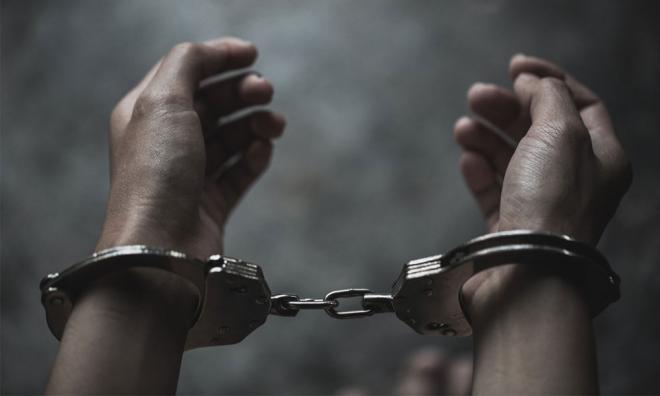
I attended an anti-drug campaign during high school. We were reminded again and again: “Don’t ever do drugs or your life will be ruined!” There was a big screen in the hall. You could hear a pin drop when they first played the video. It was about a man who was flogged 24 times for committing a crime.
For many of us, it was the first time we saw the naked buttocks of a grownup man. Pieces of flesh were ripped from his body. Definitely not for the faint-hearted. But did the scare tactic work?
When the video ended, some of my schoolmates were traumatised. But some found it amusing and they cheered and clapped their hands. Despite the intended effect, our school wasn’t drug-free that year.
The National Anti-Drug Agency (AADK) often brings different types of drugs to exhibit them in schools. The purpose? To show students how harmful drugs can be.
Last year, the director-general of the AADK told the media that two million students were at risk of drug use. Urine-testing was done in schools as an early preventive step to stop students from using drugs.
I am not saying we should turn a blind eye to children who use drugs. But the main reasons why kids use drugs are curiosity, broken families, trauma from abuse, mental illnesses, stress, boredom and peer pressure. Will random drug tests and harsh punitive action prevent all these?
True story on random urine testing - “When I was in Form 4, nine of my friends smoked rokok daun in the school bus. The next day, the AADK did a urine test in our school. All of them were found positive for tetrahydrocannabinol (THC) and jailed for weeks. After their release, the headmaster caned all of them publicly.
Some boys were suspended, some expelled. The majority ended up living a problematic life. But the one that did not attend school that fateful day was able to escape and now is a doctor.”

This story reminds me of Barack Obama and Bill Clinton who had admitted to drug use in their younger days. Would they have been US presidents if they had been caught?
The Dangerous Drugs Act, which criminalises drug use, was enacted in 1952 when addiction was considered a security threat and not a medical condition. The law does not differentiate people who use drugs experimentally, recreationally, for self-medication or chronic use. Instead, it only provides a "one-size-fits-all" solution.
The punishment is either a fine, jail sentence or both. In any case, the criminal records will be a hurdle for pursuing higher education and deters future proper employment.
"Ahmad" scored 7As for his SPM. His father and sister were both in prison for minor drug offences. Feeling lonely and depressed, he mingled with the wrong crowd and became addicted to drugs. Does the war on drugs break the cycle of addiction or has it broken Ahmad’s family, making him vulnerable to drug addiction?
Addiction is defined as a chronic, relapsing disorder characterised by compulsive drug-seeking. Negative emotions, such as sadness, grief and shame, if left unaddressed, will create tremendous potential for relapse. Without evidence-based treatment and interventions, it is highly unlikely "Ahmad" will break the cycle of addiction in prison.
I met "Rahul" and his family in a children's court when I was a rookie in the legal system. "Rahul" was this mischievous boy who frequently appeared in courts for drug use and other petty crimes.
“Please send him to prison, I don’t know how to deal with him anymore,” said Rahul’s father. What he didn’t understand was that prison is not the solution. You might even expect "Rahul" to learn something and end his addiction while in prison.
But the unpopular truth is that prison officers are not trained to handle drug addiction. Furthermore, overcrowding in prison can fan the spread of diseases.
Research conducted revealed a high prevalence of latent tuberculosis among prisoners (88.8 percent) and prison staff (81 percent) at the Kajang Prison. Instead of getting the needful intervention, "Rahul" was exposed to infectious diseases and other hardcore criminals.

The last time we met, Rahul was in the High Court, facing a drug trafficking charge.
Most drug education programmes are aimed solely at preventing drug use. After instructions to abstain, the lesson ends. Abstinence is treated as the sole measure of success. Although the abstinence-only mandate is well-intended, this approach is clearly not enough.
It is unrealistic to believe that, at a time in their lives when they are most prone to risk-taking, teenagers will completely refrain from trying alcohol and/or other drugs.
If we really want to minimise drug problems among young people, we need a "fall back" strategy that includes comprehensive education and puts the safety, welfare and future of our children at the forefront.
Drug prevention programmes should focus on enhancing the decision-making ability for a healthier lifestyle while providing active social support.
Perhaps it is wise to look at the Iceland drug prevention model, which was designed around the idea of giving youngsters better things to do. Technology and a high-level of social media use have changed the way children interact with others. What worked before might not work now, and definitely won't always work.
With the influx of information on how drugs can be delivered from door-to-door, it is high time for Malaysia to embrace a comprehensive drug policy that is evidence-based and encompasses prevention, supply reduction, treatment and harm reduction while working closely with the affected communities.
SAMANTHA CHONG is a former deputy public prosecutor and drug policy reform advocate. - Mkini



No comments:
Post a Comment
Note: Only a member of this blog may post a comment.